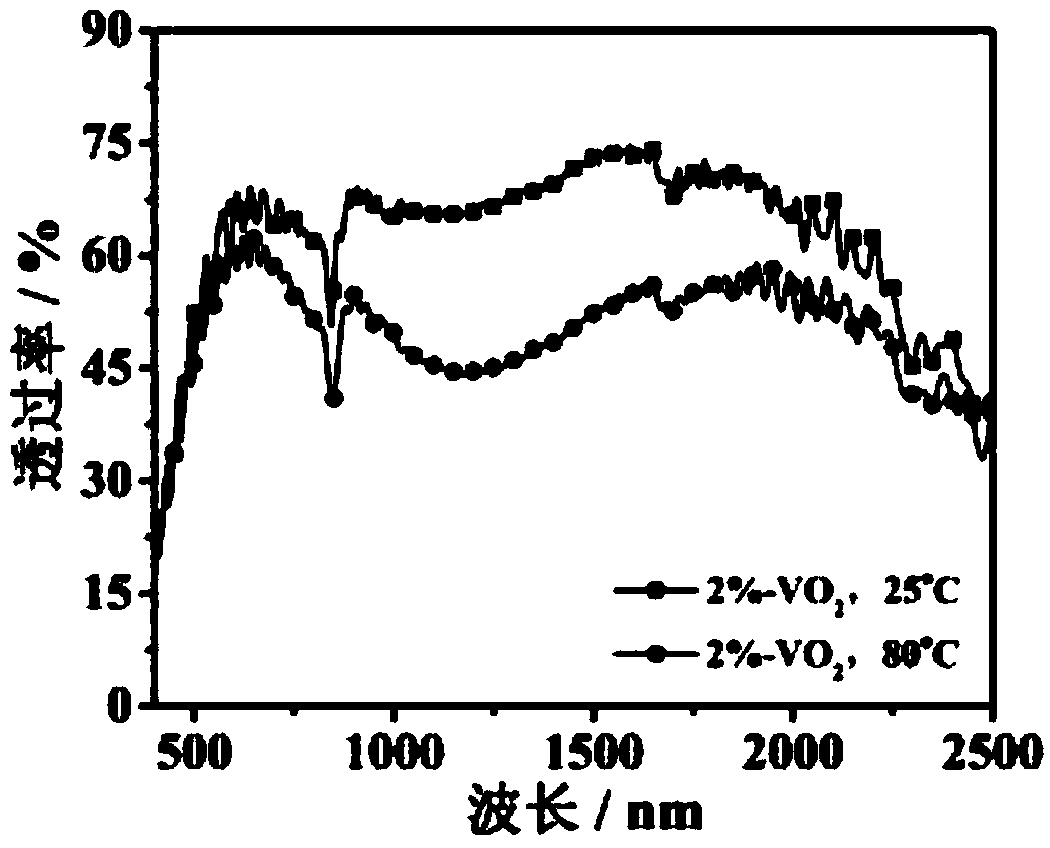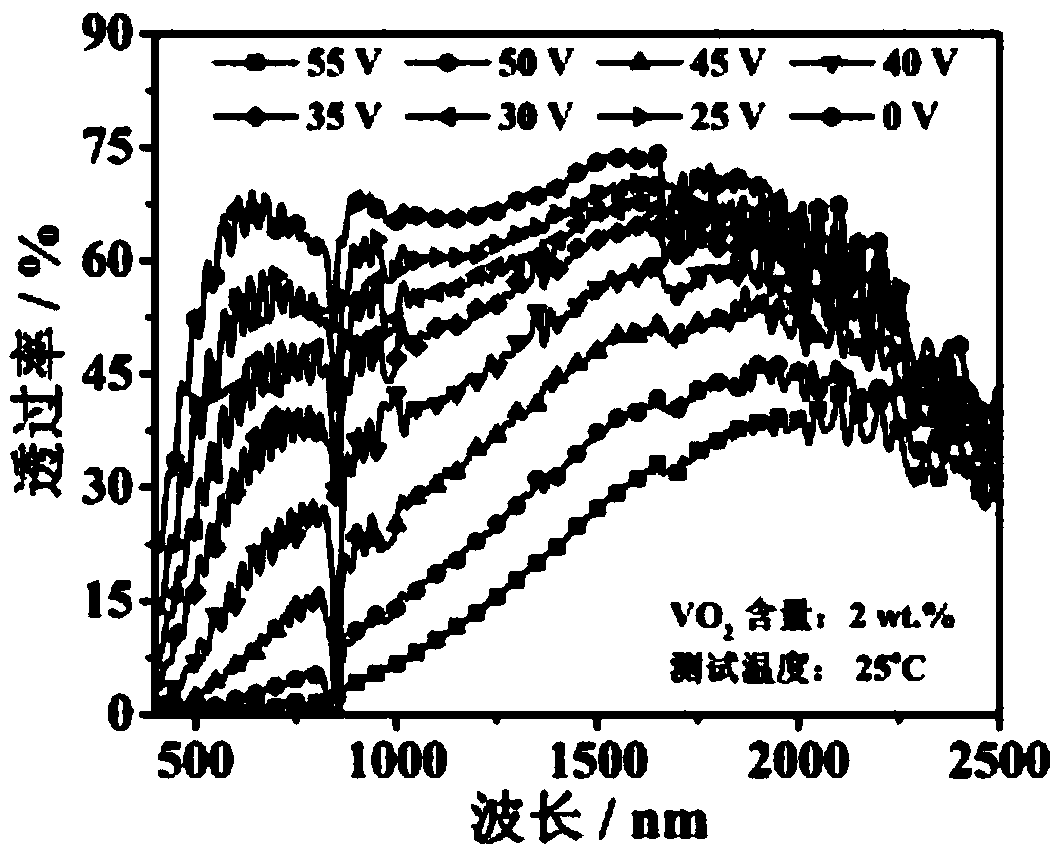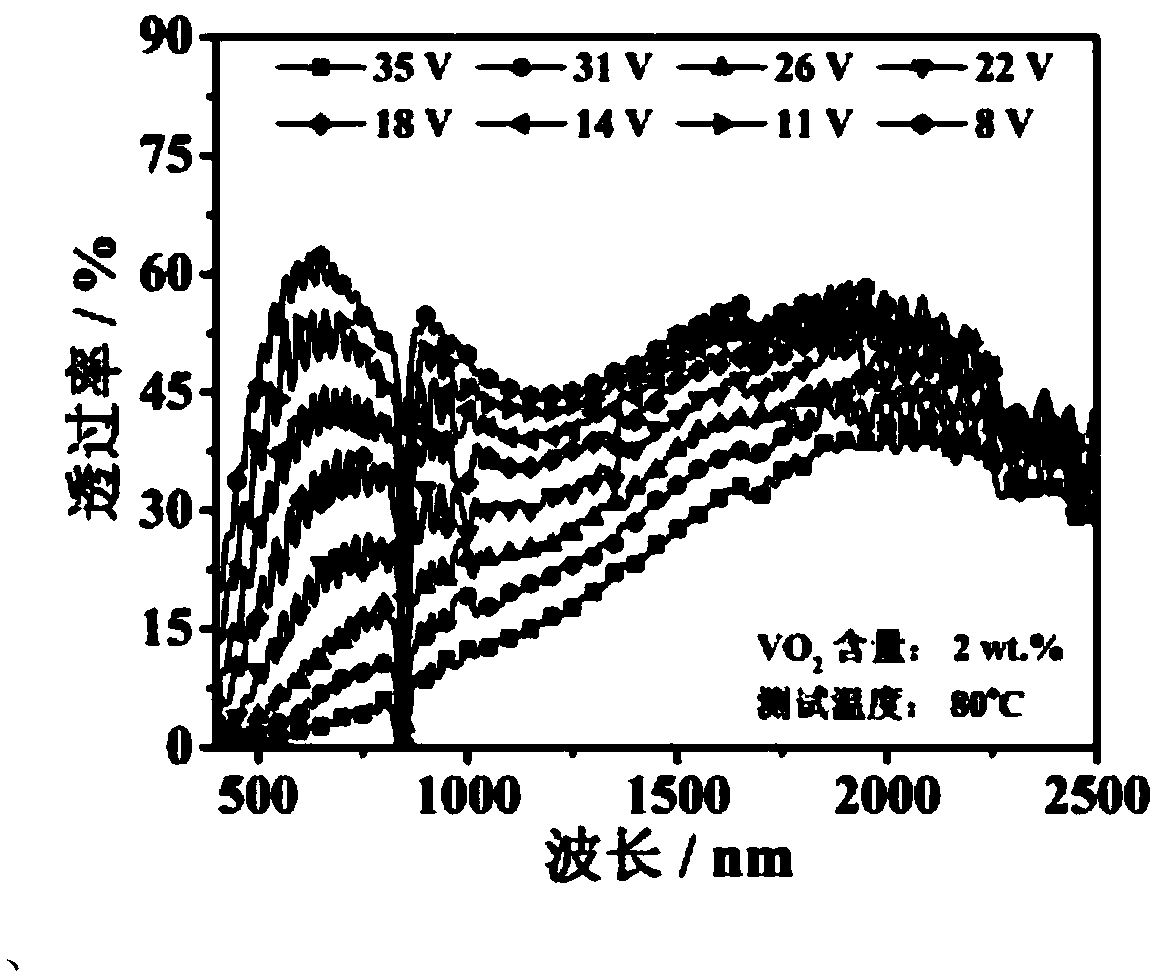Inverse electrically-controlled light-adjusting film capable of adjusting transmittance rate of near-infrared light and preparation method thereof
A near-infrared light and dimming film technology, applied in optics, nonlinear optics, instruments, etc., can solve the problem of not being able to adjust the transmittance of near-infrared light and visible light at the same time, restricting the adjustment of smart windows, etc. The light transmittance is intelligently controllable and the effect of improving the bond strength
- Summary
- Abstract
- Description
- Claims
- Application Information
AI Technical Summary
Problems solved by technology
Method used
Image
Examples
Embodiment 1
[0051] step one:
[0052] 2.3g vanadium dioxide powder (micron grade, purchased from Alpha ISA, purity 99%) was dispersed in 10g ethanol, 0.45g Disperbyk 180 was added as a dispersant during the dispersion process to stabilize the nanoparticles. Subsequently, the dispersion is stirred using a roller ball mill at a speed of 4200 rpm for a duration of 4 hours to obtain a nano-level vanadium dioxide ethanol dispersion. This dispersion liquid was left to stand for 2 days to remove the precipitates to obtain a stable vanadium dioxide nanoparticle dispersion liquid. The elemental analysis of the above dispersion was carried out by ICP, and the mass fraction of vanadium dioxide was measured to be 15wt.%
[0053] Step two:
[0054] The selected liquid crystals, polymerizable monomers, initiators, and spacer particles are listed in Table 2. The components in Table 2 were mixed according to the ratio, and stirred at room temperature to form an isotropic liquid, and mixed evenly. The total ...
Embodiment 2
[0062] In this embodiment, a toluene dispersion of vanadium dioxide nanoparticles is used, with a mass fraction of 3%. Purchased from Hangzhou Jikang New Material Co., Ltd.
[0063] step one:
[0064] The names of the selected liquid crystals, polymerizable monomers, initiators, and spacer particles are listed in Table 3. The components in Table 2 were mixed according to the ratio, and stirred at room temperature to form an isotropic liquid, and mixed evenly. The total mass of the mixture is 9.6 g.
[0065] Table 3. The ratio of each material used in Example 2
[0066] name
proportion / %
Dual-frequency nematic liquid crystal material
60.2
Polymerizable monomer
38.8
Initiator
0.5
20 micron spacer particles
0.5
[0067] Step two:
[0068] Add 13.3 g of the toluene dispersion of the vanadium dioxide nanoparticles to the mixture in step 1, and ultrasonicate for 10 minutes to make the nanoparticles uniformly dispersed. Subsequently, it was kept at 60° C. under vacuum for 6 hours...
PUM
| Property | Measurement | Unit |
|---|---|---|
| particle diameter | aaaaa | aaaaa |
Abstract
Description
Claims
Application Information
 Login to View More
Login to View More - R&D
- Intellectual Property
- Life Sciences
- Materials
- Tech Scout
- Unparalleled Data Quality
- Higher Quality Content
- 60% Fewer Hallucinations
Browse by: Latest US Patents, China's latest patents, Technical Efficacy Thesaurus, Application Domain, Technology Topic, Popular Technical Reports.
© 2025 PatSnap. All rights reserved.Legal|Privacy policy|Modern Slavery Act Transparency Statement|Sitemap|About US| Contact US: help@patsnap.com



